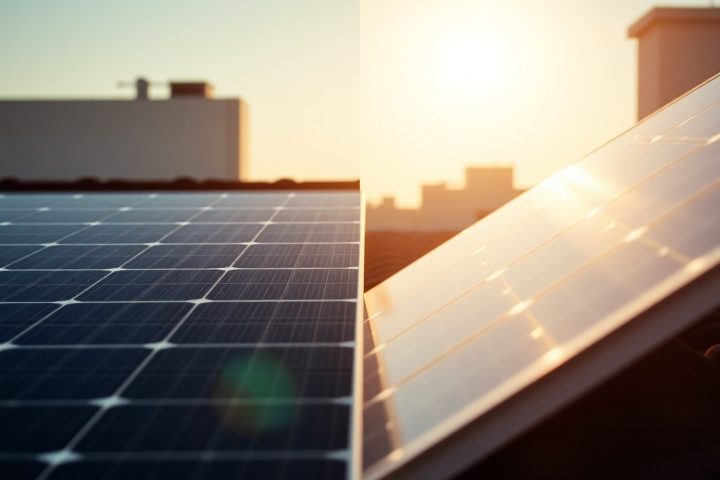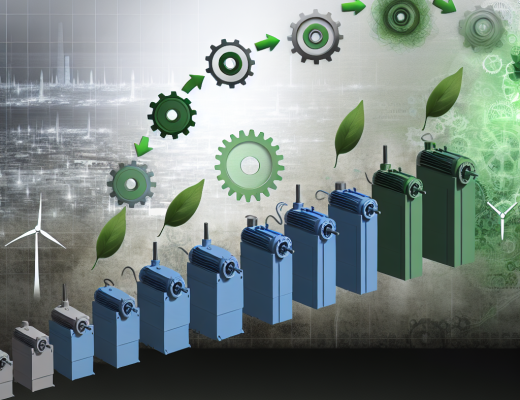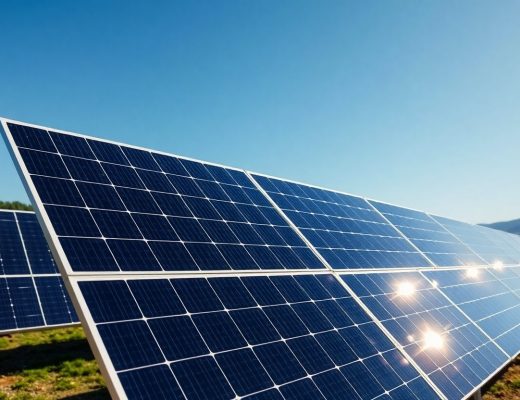Most homeowners looking to adopt solar energy face the decision between monocrystalline and polycrystalline solar panels. Understanding the differences and benefits of each type can help you make an informed choice that aligns with your energy needs and budget. In this post, we will explore the unique characteristics of these panels, their efficiencies, and the advantages they offer, enabling you to determine which solar solution is best for your home and lifestyle.
Overview of Solar Panel Types
A variety of solar panel types exist to meet different energy needs and preferences. Understanding the differences can help you make an informed decision when investing in solar technology. Key types include:
- Monocrystalline Solar Panels
- Polycrystalline Solar Panels
- Thin-Film Solar Panels
- Bifacial Solar Panels
- Building-Integrated Photovoltaics (BIPV)
Assume that each type offers unique benefits and efficiencies tailored to specific applications and environments.
| Type | Efficiency |
| Monocrystalline | 15-22% |
| Polycrystalline | 13-16% |
| Thin-Film | 10-12% |
| Bifacial | Up to 30% |
| BIPV | Varies |
What are Monocrystalline Solar Panels?
Above all, monocrystalline solar panels are known for their high efficiency and sleek appearance. They are made from a single crystal structure, which allows for superior energy conversion compared to other types. Their lifespan typically extends beyond 25 years, making them a solid investment for your energy needs.
What are Polycrystalline Solar Panels?
Solar panels made from multiple crystal structures form polycrystalline solar panels. This type of panel is generally less expensive to manufacture, resulting in a lower price for you. While they are slightly less efficient than monocrystalline options, they still provide good energy production, especially in sunny environments.
As a result, polycrystalline solar panels come in a bluish hue and may take up more space than their monocrystalline counterparts for the same energy output. Their performance can vary based on temperature and lighting conditions, but they are often favored by those seeking to balance cost and efficiency in their solar systems.
Key Differences Between Monocrystalline and Polycrystalline Panels
Now that you are considering solar panel options, it’s vital to understand the key differences between monocrystalline and polycrystalline panels. Monocrystalline panels are made from a single crystal structure, offering higher efficiency and a more compact design. In contrast, polycrystalline panels are composed of multiple crystal structures, resulting in lower efficiency but generally at a more affordable price point. By evaluating these differences, you can make a more informed decision based on your energy needs and budget.
Efficiency and Performance
Efficiency plays a vital role in your solar panel choice. Monocrystalline panels typically boast higher efficiency ratings, often exceeding 20%, which means they convert more sunlight into electricity. On the other hand, polycrystalline panels usually have efficiency ratings between 15% to 17%. If space is limited on your property, choosing monocrystalline panels may be advantageous, as their higher efficiency allows you to generate more power in a smaller area.
Aesthetic and Design Considerations
Beside efficiency, the aesthetic appeal of your solar panels may influence your decision. Monocrystalline panels are known for their sleek, uniform appearance, often featuring a dark black hue that blends seamlessly with most roofs. Polycrystalline panels, while still effective, typically display a bluish hue with a speckled look due to their multiple crystal structures. Therefore, if visual integration with your home’s design is important to you, the sleek appearance of monocrystalline panels might be worth considering.
Aesthetic considerations go beyond just the color of your solar panels; they also encompass the overall look and feel of your home. A well-integrated solar panel system can enhance your property’s curb appeal, making it more attractive to potential buyers. When weighing your options, think about how each type of solar panel aligns with your home’s exterior and design goals. Choosing a panel that complements your home can add value and create visual harmony in your living space.
Cost Analysis
Assuming you are considering solar panels for your home, a cost analysis can help you determine which option, monocrystalline or polycrystalline, fits your budget and energy needs. Monocrystalline panels typically come with a higher upfront price due to their efficiency and longevity, while polycrystalline panels offer a more budget-friendly solution but may yield lower energy output over time. Understanding these differences can aid you in making an informed decision that aligns with your financial goals.
Initial Investment
Any purchase decision you make regarding solar panels will start with the initial investment, which varies significantly between monocrystalline and polycrystalline options. Monocrystalline panels usually have a higher price tag, owing to their advanced technology and efficiency ratings. On the other hand, polycrystalline panels tend to be more affordable, making them an attractive option for homeowners on a tighter budget. Evaluating your financial situation and energy needs can help you decide which type suits your initial investment better.
Long-term Savings and Return on Investment
At the end of the day, long-term savings and return on investment (ROI) are what truly matter when selecting solar panels. Monocrystalline panels often provide a better ROI due to their efficiency, allowing you to produce more energy over their lifespan. Although their initial costs are higher, the savings on your electricity bill can offset that expense in the long run. Conversely, while polycrystalline panels are cheaper to install, you may see a slower return due to their lower efficiency rates. Therefore, it’s necessary to consider not just upfront costs but also potential future savings.
Cost analysis goes beyond the initial investment; it includes understanding how the efficiency of your chosen solar panels translates into savings over time. Higher efficiency panels, like monocrystalline, may help you generate more electricity, directly reducing your energy bills. While there’s a higher initial investment, the savings could reach thousands over their lifespan. In contrast, polycrystalline panels, while affordable upfront, might provide lower energy output, leading to smaller average savings annually. Thus, calculating your potential ROI can guide your decision-making, ensuring your investment pays off in the long run.
Installation and Maintenance
To ensure optimal performance and longevity of your solar panels, understanding the installation and maintenance processes is crucial. While both monocrystalline and polycrystalline panels are effective, their installation and upkeep requirements can differ significantly. This knowledge can help you make an informed decision that matches your energy needs.
Installation Process Comparison
Installation Processes
| Panel Type | Installation Process |
|---|---|
| Monocrystalline | Simpler to install due to uniform size and shape. |
| Polycrystalline | May require additional adjustments due to varied sizes and shapes. |
Maintenance Requirements
Maintenance of your solar panels is vital for ensuring they operate at peak efficiency. Maintenance tasks vary slightly between monocrystalline and polycrystalline systems, but generally, both require periodic cleaning and inspections. You should be aware of the specific upkeep needed for your chosen type to prolong their lifespan and performance.
Understanding the maintenance requirements of your solar panels involves knowing what tasks are necessary for optimal performance. For instance, regularly cleaning the panels can prevent dirt and debris buildup that could hinder sunlight absorption. Additionally, scheduling professional inspections can help identify any potential issues early. Ultimately, staying proactive with these maintenance tasks will help you maximize your investment in solar energy.
Environmental Impact
Despite the increasing push for solar energy, both monocrystalline and polycrystalline solar panels have distinct environmental impacts. Monocrystalline panels tend to be more efficient, generating more electricity per square meter, which means you need fewer panels to achieve your energy goals. In contrast, polycrystalline panels, while slightly less efficient, are often made from recycled materials, offering a sustainable option that may appeal to environmentally conscious consumers.
Production and Sustainability
Below, it’s important to understand the production processes involved in each type of solar panel. Monocrystalline panels typically require more energy to produce but are made from a single crystal structure, resulting in a longer lifespan. Polycrystalline panels, on the other hand, utilize multiple crystal structures, making their production easier and often more sustainable.
Longevity and Recycling
Beside their production considerations, longevity and recycling are vital components of environmental impact. Monocrystalline panels generally last longer than polycrystalline ones, often maintaining efficiency for 25 years or more, whereas polycrystalline panels typically have a slightly shorter lifespan.
Even though monocrystalline panels offer better longevity, polycrystalline panels can be easier to recycle due to their simpler structure. This means that you can reduce waste and environmental impact when disposing of or upgrading your polycrystalline panels. Understanding the recycling options available to you is vital, as responsible disposal and recycling practices will further minimize your environmental footprint, regardless of which panel type you choose.
Choosing the Right Solar Panel for Your Needs
Many factors influence your decision when selecting between monocrystalline and polycrystalline solar panels. Assessing your own energy requirements and understanding the benefits of each type will help you make a well-informed choice that aligns with your lifestyle and budget.
Factors to Consider
Any decision about solar panels should include considerations such as efficiency, space availability, and budget. Evaluate these factors:
- Efficiency ratings
- Cost per watt
- Space for installation
- Durability and lifespan
The right choice will depend on your specific circumstances and priorities.
Suitability for Different Environments
Around the world, different environments present unique challenges for solar panels. Factors like shading, geographic location, and climate play a significant role in determining which panel type performs best.
Different climates can impact the efficiency of solar panels significantly. For instance, monocrystalline panels excel in low-light conditions, making them better suited for cloudy areas, while polycrystalline panels are cost-effective and perform well in sunny climates. Additionally, if your installation area has limited space, monocrystalline may be a better fit due to its higher energy output per square meter. Understanding your environment will guide you toward the best choice for maximizing your solar investment.
To wrap up
With this in mind, understanding the differences and benefits of monocrystalline and polycrystalline solar panels empowers you to make a well-informed decision for your energy needs. Monocrystalline panels offer higher efficiency and a sleek design, making them ideal for limited space, while polycrystalline panels provide a more budget-friendly option with good performance. By evaluating your specific requirements and preferences, you can choose the right solar solution to maximize your investment and enhance your sustainability efforts.




